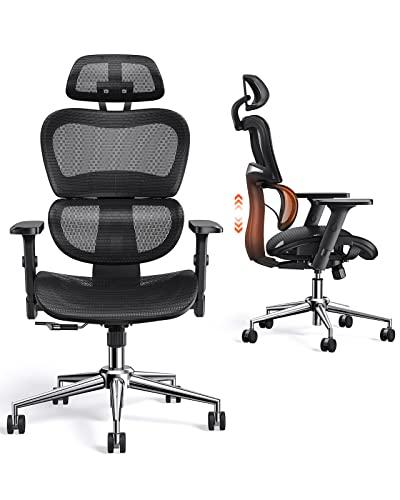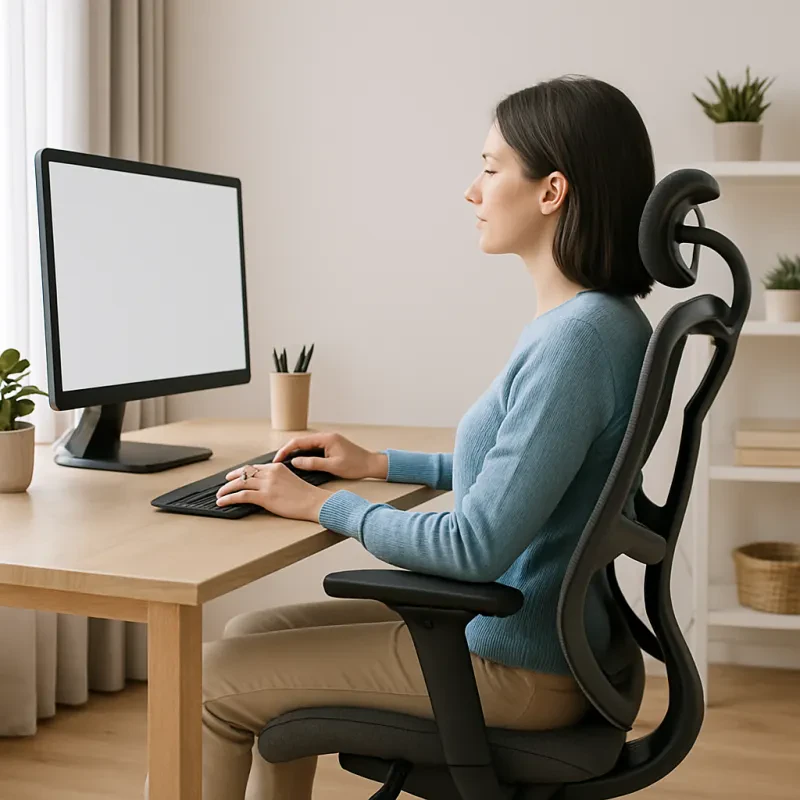In today's work-from-anywhere world, sitting comfortably isn't a luxury—it's a necessity. Whether you're typing away at a home office, gaming for hours, or just trying to improve your posture, the right ergonomic chair can be a game changer. But with so many options out there, how do you choose the one that's right for you?
This guide breaks it all down: from the science behind support to the must-have features for comfort, and how to pick the best ergonomic chair tailored to your lifestyle and body.
Why Ergonomics Matter
The average person sits for over 6 hours a day. Poor posture, lack of support, and uncomfortable seating can lead to a host of issues: lower back pain, neck strain, poor circulation, and even fatigue. Ergonomic chairs are designed to combat these problems by promoting better alignment and reducing stress on pressure points.
When you invest in an ergonomic chair, you’re not just buying furniture. You’re investing in:
-
Pain relief for your back, neck, and hips
-
Increased productivity from less physical discomfort
-
Long-term wellness, especially for people who work long hours at a desk
Key Features to Look For in an Ergonomic Chair
Not all chairs labeled "ergonomic" are created equal. Look for these features:
1. Adjustable Seat Height
Your feet should rest flat on the floor with knees at a 90-degree angle. A chair with a pneumatic adjustment lever allows you to find that perfect height.
2. Lumbar Support
Your lower back needs support to maintain its natural curve. Chairs with adjustable lumbar support reduce strain and prevent slouching.
3. Seat Depth and Width
The seat should support most of your thighs without pressing into the back of your knees. Deep, wide seats can be uncomfortable for petite users, while narrow seats may not fit larger body types.
4. Backrest Tilt and Tension
Reclining slightly while working reduces spinal pressure. Look for a chair that allows you to adjust the tilt and tension for relaxed support.
5. Adjustable Armrests
Armrests should let your shoulders relax and elbows bend at about 90 degrees. Adjustable options prevent neck and shoulder tension.
6. Breathable Material
Mesh backs provide ventilation, while cushioned seats made of high-density foam offer comfort without flattening over time.
7. Swivel and Mobility
Smooth swivel and caster wheels help prevent awkward twisting and reaching.
Types of Ergonomic Chairs
Different needs call for different styles. Here are the most common types:
🔍 Task Chairs
Ideal for home offices and general use. They offer essential adjustability and compact design.
💼 Executive Chairs
Larger, cushier, and often made with leather or faux leather. Good for long hours, but make sure they have proper lumbar support.
🔧 Kneeling Chairs
Encourage a more open hip angle and upright posture. Great as a secondary chair or for short work sessions.
🎮 Gaming Chairs
Designed for long sitting sessions with high backs, neck pillows, and lumbar cushions. Not all are ergonomically sound—choose wisely!
♿ Saddle Chairs
Promote active sitting and spinal alignment, often used in medical or artistic environments.
Matching the Chair to Your Needs
For Back Pain
Choose a chair with strong lumbar support, adjustable recline, and memory foam cushioning.
For Petite Users
Look for chairs with smaller seat depth, narrow frame, and adjustable armrests.
For Tall Users
Seek extended seat height ranges, high backs, and deep seats.
For Hot Climates
Mesh-backed chairs provide excellent airflow and reduce sweating.
For Long Hours
Executive or gaming-style chairs with ample cushioning and recline features support prolonged use.
Real-World Use Cases
Home Office Setup
A good task chair with adjustable features fits tight spaces and supports hybrid work schedules.
Corporate Environments
Investing in quality executive chairs for employees can reduce absenteeism due to discomfort or strain.
Gaming or Streaming
Pick a model with neck and lumbar pillows, tilt lock, and supportive cushioning for marathon sessions.
Quick Ergonomic Checklist
-
Can the seat height be adjusted?
-
Does it offer lumbar support?
-
Are the armrests adjustable?
-
Is the seat depth comfortable?
-
Can you recline with support?
-
Is the material breathable and durable?
Final Buying Tips
-
Try before you buy if possible.
-
Read reviews with a focus on long-term comfort.
-
Check weight capacity and sizing charts.
-
Consider warranty and brand reputation.
And remember: no chair is perfect unless you move. Get up every 30–60 minutes to stretch and reset.
(Check out our article on the Sit-Stand Method to boost comfort and productivity here.)



